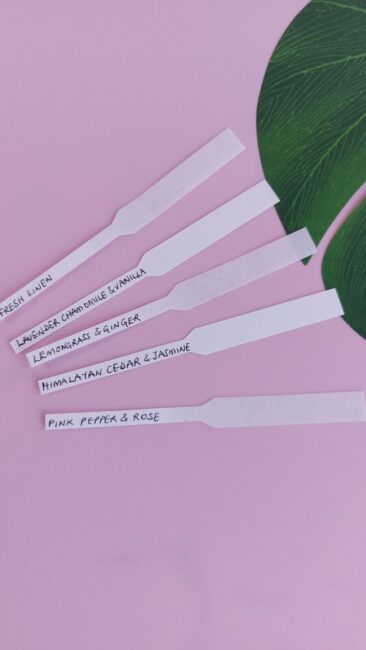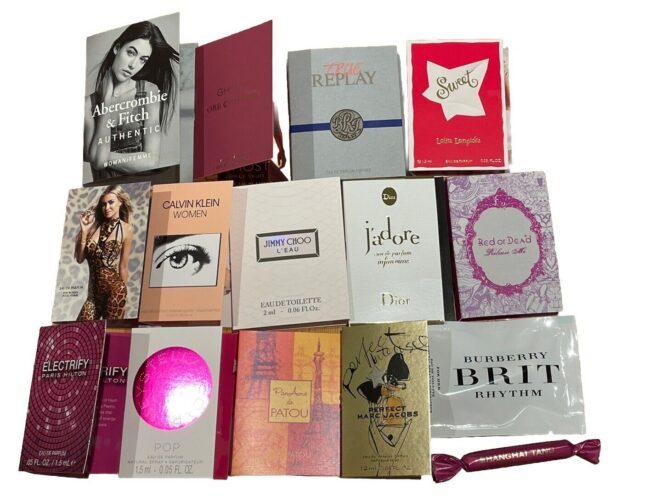How To Test Perfume Samples
Sampling perfume is a fun and surprisingly personal experience. Whether you’re searching for your new signature scent or want to experiment with different fragrance notes, knowing how to test perfume samples properly saves time and helps avoid regrettable full-bottle purchases. Here’s my all-in-one guide, based on real-world experience, insider tips, and a splash of curiosity.
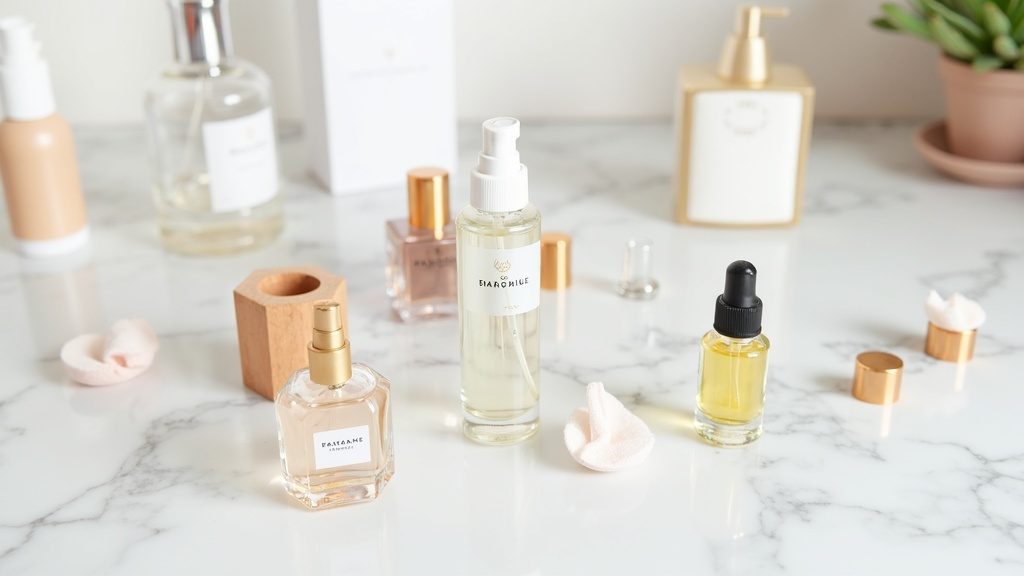
Understanding Perfume Samples: What’s Available Now
Perfume samples come in many forms these days. Traditional spray vials are still around, but now brands also offer dabber bottles, sample cards, and even tiny rollerballs. These little testers are typically found at department stores, beauty counters, and sometimes sent as fun surprises with online orders. Some brands even use miniature bottles that fit easily in your pocket or purse, so sampling on the go has never been easier.
You might remember the days when perfume samples were almost always free at the fragrance counter. That’s still true at many big department stores, but some brands now charge a small fee or only include samples if you make a purchase. It’s always worth asking if you don’t see any on open display. A bit of polite curiosity gets you far in the fragrance world! If you enjoy collecting samples, try building relationships at your favourite counters; associates often have the inside scoop on new launches and exclusive samples.
How to Test Perfume Samples the Right Way
Testing perfumes is about more than just a quick sniff. Every nose is different, and the true scent of a perfume, also called its “dry down,” takes time to develop. Here’s my trusty routine for getting the most accurate impression from a sample, even when you’re in a hurry or surrounded by lots of distractions.
- Start Fresh: Avoid wearing any scented products like lotions, hairsprays, or deodorants before testing. These can mix with the perfume and skew the scent.
- Test in Small Quantities: Avoid testing five or six perfumes at once; it gets confusing fast. I usually limit myself to two or three at a time, with breaks in between. Try bringing along some unscented wipes to refresh your skin if you’re sampling back-to-back.
Skin vs. Test Paper: Which One Works Best?
Fragrance pros use two primary methods when sampling: paper blotters and direct application on skin. Each approach has its advantages. Knowing which method to use can help you spot a winner more efficiently and make the process more enjoyable.
Testing on Paper Blotters
Perfume blotters, sometimes called test strips, soak up fragrance and let you experience the scent in its pure form without being influenced by your skin’s natural oils. This is a helpful trick when you want to compare several scents quickly before narrowing down your options. Here’s how I do it:
- Spray or dab the sample onto a blotter or plain piece of paper.
- Gently waft the paper to let the alcohol evaporate, then take a sniff.
- Write the perfume’s name on the strip. Trust me, they all blend after a while!
While paper gives you a decent first sniff, it will never tell you the entire story. Some fragrances change a lot when they interact with skin, so paper should be your starting point, not your final decision maker.
Testing Directly on Skin
Skin is where the magic happens. Your body heat and natural chemistry bring out different notes in a fragrance. To test a sample on your skin:
- Spray or dab the perfume on a pulse point; wrists work great.
- Never rub your wrists together. Rubbing damages the fragrance structure and can make it fade faster.
- Give it a moment. First, you’ll get the top notes (bright, sometimes citrus or zesty aromas). After about 20 to 30 minutes, the middle and base notes develop. This part is essential since you’ll likely be wearing the perfume for hours at a time.
- Try to avoid other scented products nearby so the perfume shines alone.
Testing on skin is my favourite method for narrowing down a final choice. If you’re out shopping, ask the staff for sample vials to test the perfume at home. That way, the scent won’t compete with the store’s environment.
Related Article: Top, Middle and Base Notes
How to Predict How a Perfume Will Smell on Your Skin from Paper Blotters
If you only have blotters and can’t test on your skin right away, here’s a handy trick: After smelling the blotter, hold it right up against your skin or inner elbow. While not quite the same as an actual skin application, your body heat helps bring out some of the deeper notes for a slightly more accurate preview of the scent. In a pinch, even lightly breathing on the blotter can warm it enough to change what you smell.
Some perfumeries sell “blank” skin patches (like a neutral swatch you can stick on) for gaining a closer scent preview, but the simple tricks above work well for most situations. If you’re considering an expensive fragrance, I highly recommend taking a sample home to see how it develops throughout your daily routine.
Related Article: Choosing The Right perfume
Practical Tips for Getting the Most out of Perfume Samples
- Test One Fragrance Per Wrist: If you want to sample two perfumes in a visit, use one on each wrist. Just be sure they’re not too close together so the scents don’t mix.
- Let Each Perfume Settle: Don’t rush to buy based on the first five minutes. Scents switch up—a perfume that starts sweet may become spicy, musky, or woody as time passes.
- Step Outside: Department stores are filled with all sorts of smells that can get in the way. After applying a sample, leave the store and sniff again in the fresh air for a more accurate impression.
- Store Your Samples Right: Keep sample vials tightly sealed and away from sunlight or heat. Heat degrades a fragrance and changes the way it smells. Placing them in a cool, dark drawer extends their lifespan.
- Label Your Samples: Writing down the fragrance name and date tested helps you recall favourites later, primarily if you collect lots of samples.
Related Article: What Is Perfume Sillage
Are Perfume Samples Still Free in Stores?
Perfume samples aren’t as freely given away as they once were, but many stores still offer them if you ask. High-end and luxury shops are more likely to require a purchase, or they might give out sample sets for a small fee. Department stores often have tester bottles and sometimes premade sample cards at the counter.
I usually have good luck asking politely, especially if I show genuine interest in a particular scent. It helps to get to know the sales staff; they sometimes share brand events or launch days with more sample giveaways. Occasionally, they can even set aside first-access samples for customers who ask nicely and visit often.
For online shoppers, plenty of websites (like eBay) offer sample programs where you pay a small fee for several testers. Some websites even refund the cost if you later buy a whole bottle. Another pro-tip: look for seasonal promotions or special discovery sets, which can offer extra samples for free or at significant discounts.
15 designer women’s mini perfumes – Lempicka, Ghost, Aber & Fitch
The FM WORLD website offers a great selection of fragrance samples, making it easy and affordable to explore a variety of scents before committing to a full bottle. These samples allow you to discover your favourite perfumes without spending a lot, making them perfect for those who love trying new fragrances or want to find the ideal scent for any occasion.
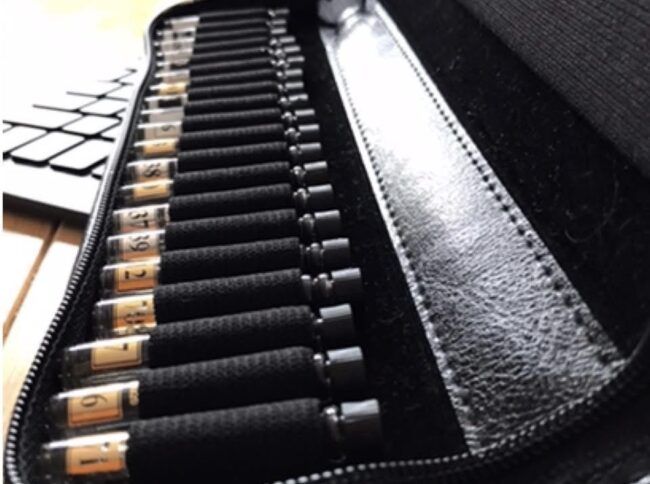
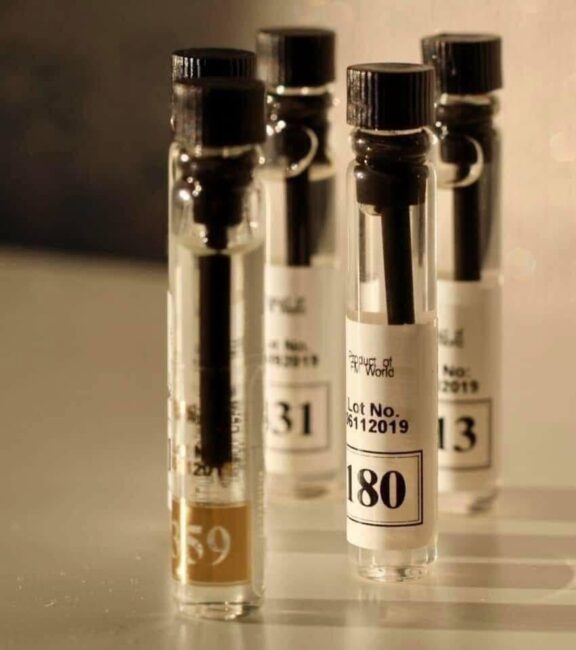
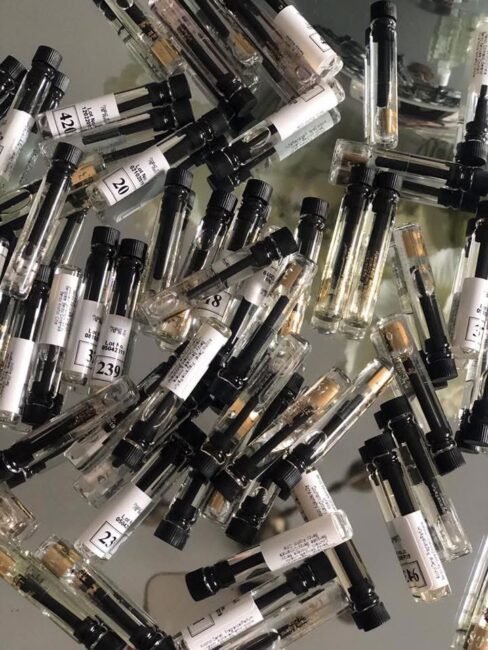
Testing Perfume: Common Mistakes to Avoid
- Overloading Your Nose: Smelling lots of perfumes in quick succession causes “nose fatigue.” When in doubt, take a breather between tests, or sniff something neutral like your own sleeve to reset your senses. Some people like to keep a little jar of coffee beans on hand, but there’s debate about whether they truly help.
- Trusting Only the Initial Smell: Some scents start strong but fade fast. Always wait at least half an hour (or better yet, a few hours) before making your decision. That first sniff is not always the best predictor.
- Mixing Scents: Trying out different perfumes on skin areas too close together makes the smells blend. Please stick to one fragrance per wrist or arm so you can tell them apart easily.
- Assuming Paper Equals Skin: Use blotters for a first impression, but always test on your skin for the final verdict. The true personality of a perfume comes out with your chemistry.
Advanced Tips for Real Perfume Lovers
If you’re a little bit fragrance-obsessed (no shame), there are some extra steps to get into deeper sampling:
- Keep a Scent Diary: Jot down what you liked or didn’t like about each test, including where you wore it and what the weather was like. Humidity and temperature can change how a perfume wears, and your preferences might change with the seasons.
- Try Layering: Some brands create perfumes intended to be layered. Experiment by applying a bit of one scent, then adding another to see if you like the mix. Just go slow, as too many scents can get overwhelming quickly.
- Order Sample Sets: Many modern brands offer curated sample sets. They may cost a bit more than single testers, but they give a wider look at a brand’s full lineup. Sometimes sample set purchases come with a voucher to put toward a full-size purchase later.
- Share and Compare: If you have perfume-enthusiast friends, consider swapping samples and comparing notes; it’s a great way to try more fragrances without breaking the bank and to hear different impressions from other noses.
Ladies’ Perfume Samples on eBay
Frequently Asked Questions
How long should I wait after applying a perfume sample to decide if I like it?
It’s best to wait at least 30 minutes, but several hours are even better. The scent will change as the notes develop and react with your skin. Some people even like to check back in after half a day to see how the fragrance lingers.
Is there a good way to remove a perfume I don’t like?
Try washing the area with unscented soap and warm water, but you might need to be patient—some fragrances cling! Baby wipes can help in a pinch. If the smell lingers, rubbing a little plain alcohol or makeup remover over the area can help break down stubborn perfume molecules.
What’s the difference between Eau de Parfum and Eau de Toilette samples?
The main difference is the concentration of fragrance oils. Eau de Parfum usually lasts longer and smells more intense. Eau de Toilette is lighter and tends to fade faster. If you want something subtle and fresh, go for Eau de Toilette; if you prefer a scent that sticks around, consider Eau de Parfum.
In our article, What Perfume Did Queen Elizabeth Wear we discuss the difference between the strengths of perfume.
Wrapping Up: Trust Your Senses
Learning how to test perfume samples properly gives you better results and more confidence when picking out a new scent. Exploring both paper and skin-testing methods, taking your time, and being mindful of how a perfume changes over hours can turn shopping into a rewarding sensory adventure. With these tips, you’ll feel ready to tackle any fragrance counter you stumble upon. Enjoy the hunt, stay curious, and don’t be afraid to trust your instincts—or your nose!
Love Writing Blogs? Turn Your Passion into Profit!
If you enjoy sharing your thoughts through blogging, why not make it a business? By joining Wealthy Affiliate, you’ll get access to tools, training, and a supportive community to help you build and grow your website. Whether you’re a beginner or a seasoned writer, Wealthy Affiliate makes it easy to turn your words into income.
Click the box to start your blogging journey today!

